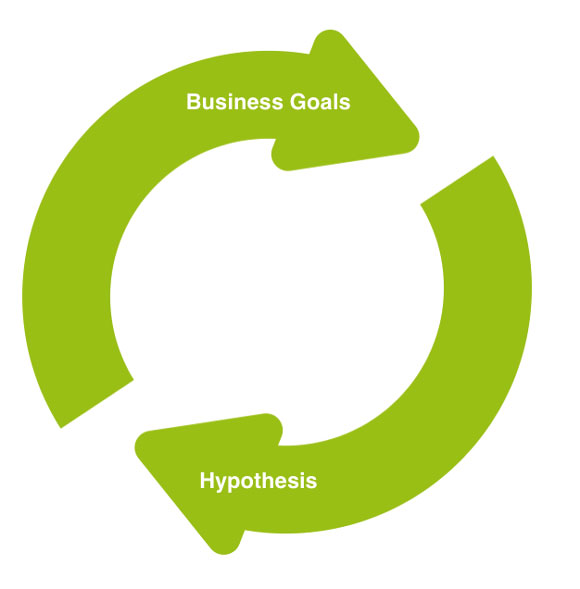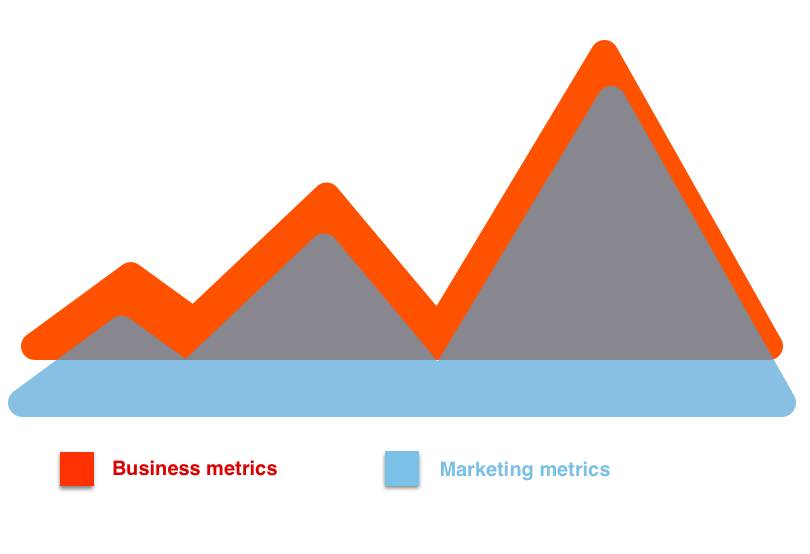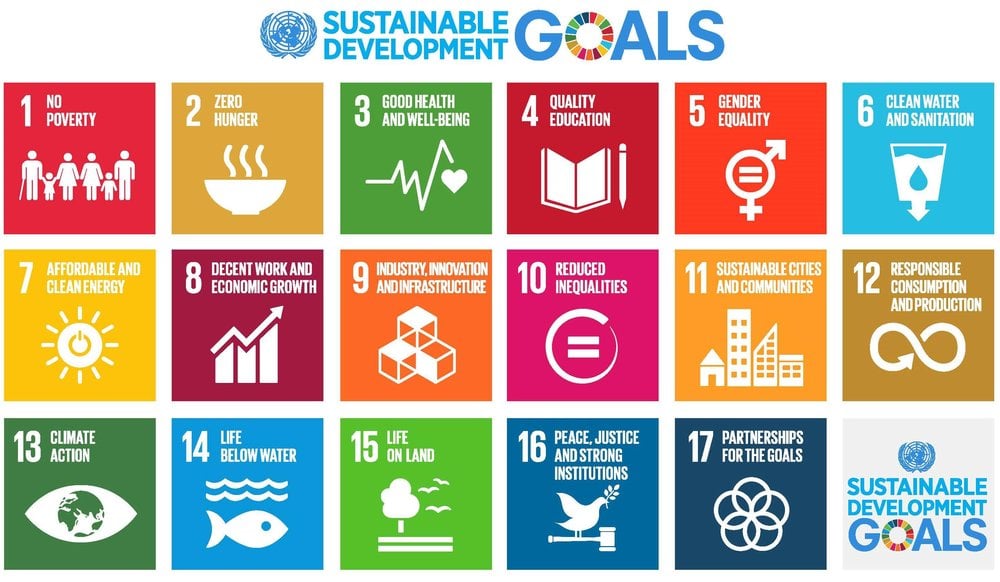Which Marketing Metrics Really Matter?

What you measure reveals what you value. Finding and tracking the right marketing metrics for your organization will put you on track to drive long-term success grounded in ethics and sustainability.
“Which marketing metrics should we track?”
We get this question all the time. It usually comes from clients who are overwhelmed by all the metrics and data-tracking options offered by various online marketing tools. When it’s easy to measure everything, it can be tempting to do just that. However, this rarely leads to desired outcomes.
For most organizations, there are only a few metrics that really matter. These are based on the organization’s business, impact, and marketing goals. However, if you aspire to take a more inclusive, customer-centric, or sustainable approach to digital marketing that focuses on stakeholder needs and long-term, continuous improvement, things quickly get complicated.
With that being said, tracking core marketing metrics is far more efficient and effective than tracking everything all the time without a plan:
- First, you need to define what success looks like for your team or organization.
- This will help you better understand the marketing goals that matter most.
- In turn, this should inform specific metrics that you can measure and improve upon over time with various campaigns.
Let’s dig a little deeper into what this actually means.

Finding Marketing Metrics That Matter
Start by identifying what success looks like. In our experience, these exercises are best run in a collaborative workshop environment with the right organizational stakeholders involved.
If, a year from now, you look back on your marketing efforts, what do you see?
- Is it a significant increase in sales or donations?
- Might it be a measurable reduction in customer service or support calls?
- Or could it be a rise in conference attendance, social media followers, or newsletter subscriptions?
- Maybe it’s having the resources to add two new members to your team.
Based on how you define success, identify a blue sky list of business or organizational goals that could help you achieve it. As with any creative collaboration process, start with blue sky thinking. If necessary, review company mission statements and business plans or theories of change for impact business models to help you identify as many potential goals as possible.
Capture these ideas on a whiteboard, shared doc, etc. At this point, no idea is bad. You’ll whittle these down in the steps described below.

How to Create Marketing Hypotheses from Business Goals
Start with the blue sky list of goals you created above. We’re going to hone your choices down to a handful of the best options.
Use a prioritization grid to understand the impact and effort of each goal. If reaching a goal is low effort yet high impact, this is a no-brainer. It should go to the top of the list. Conversely, if something is high effort yet low impact, you probably don’t want to pursue it.
Vote on these if you’re workshopping this with a team. The point is to create consensus on the most important metrics to your organization.
To create hypotheses, start with the goals you have identified as most important to establish a baseline. Ask these questions:
- Where are you at now?
- What data do you have to support current performance?
- What data do you need to show improvement moving forward?
Now, connect those goals to marketing hypotheses that can be proven or disproven over a period of time. You’re probably already making informal marketing hypotheses and acting on them. They sound something like this:
If we [do this marketing task], it’s likely we’ll see [this effect].
In a perfect world, business goals and customer needs are clearly aligned. However, if you’re like most time-strapped marketers, your hypotheses might come from hunches you have about what content, campaign, or promotion will resonate with a specific customer type.
Converting Goals to Metrics
Next, define metrics to improve performance against your goals and success criteria. Be specific and realistic based on your resources and capacity. In other words, if your definition of success was based on where things are at a year from now, don’t expect to meet those goals in a month. Instead, try something like this example:
We want to increase newsletter subscriptions by 10% in three months.
Now, tie those metrics to a campaign you can use to test performance against your goals. What do you think will help you reach that goal? Brainstorm several ideas.
Remember, hypotheses should be easily testable. The key is to find the least amount of effort it will take to validate or refute them. This is not the time for elaborate plans, but rather simple ideas that move you closer to your goals. In other words, the key is to do more of what works and less of what doesn’t.
Marketing Metrics Examples
For example, let’s explore how this might look in a couple different industries.
Public Library
- Organizational goal: This year, the library needs to increase participation in its teen programs by 20%.
- Marketing hypothesis: If we promote our teen events on our Facebook page with advertising targeted at teens and parents of teens, we’ll see an increase in program participation.
Natural Foods Store
- Business goal: Increase subscriptions to our organic produce boxes in the Chicago area to 900 subscriptions from our current 755.
- Marketing hypothesis: If we optimize a landing page designed to convert users into customers for several target keywords via monthly online ad campaigns, we’ll see an increase in organic produce box subscriptions.
Of course, you need to figure out marketing messages, visual elements, and other campaign components you think will resonate with people you want to reach, each of which, by the way, is testable. Again, keep it lean. You don’t want to get bogged down with analysis paralysis when it comes time to measure each campaign’s results.
Measuring the Results
Next, once you have a campaign ready to roll, be sure you know exactly what you want to measure, how often, and the length of your campaign. Using our examples:
Public Library
- Organizational metric: Increase participation in teen programs by 20%
- Marketing metric: Reach of Facebook advertising in each demographic (teens and parents)
- Baseline: 1,200 youth participants
- Timeframe: February 1st through May 31
Natural Foods Store
- Business metric: Increase produce box subscriptions to 900
- Marketing metric: Percentage of traffic to landing page based on organic search and landing page conversions
- Baseline: 755 subscriptions
- Timeframe: March 1st through May 31st
However, what happens if you know a campaign will fail before it ends? What if it is April 15th and you have only sold a handful of produce box subscriptions or increased youth program participation by a small percentage?
Be sure to choose the frequency by which you will take measurements. Pivoting a failing campaign by testing new messaging, visuals, or other content can help you salvage results.

Connecting Marketing Metrics and Business Metrics
The connection between your marketing metrics and business metrics won’t always be cut and dried, but you can use your best judgement to determine whether or not those efforts are in sync with business metrics.
Similarly, it’s important to note that you can connect a business goal to more than one marketing hypothesis. There is more than one way to organize a marketing campaign around a business or organizational objective.
For example, the natural foods store might also create advertising campaigns on different channels to promote organic produce box subscriptions. Each campaign should have its own set of metrics.
A Template for Discovering your Marketing Metrics
Based on the steps above, use the template below to create a reasonable marketing hypothesis to achieve each goal. (When we say reasonable, we mean keeping in mind budget, staff, and time constraints.)
In the end, what you’ll have will look something like:
Business Goal #1
1st marketing hypothesis to support Business Goal #1
- Business metrics needed to measure
- Marketing metrics needed to measure
- Timeframe and baseline metrics to measure against
2nd marketing hypothesis to support Business Goal #1
- Business metrics needed to measure
- Marketing metrics needed to measure
- Timeframe and baseline metrics to measure against
Business Goal #2
1st marketing hypothesis to support Business Goal #2
- Business metrics needed to measure
- Marketing metrics needed to measure
- Timeframe and baseline metrics to measure against
… and so on. Using this system, we suddenly find ourselves looking at just a handful of marketing metrics that we propose will move the needle. These are the metrics that, for this time period, we should be tracking.

What About Sustainability Metrics?
We’re living in a time where sustainability metrics are becoming increasingly important across entire organizations and departments, including marketing. Organizations whose marketing is singularly focused on growth—especially exponential growth—often externalize social and environmental impacts. This causes untold problems and many unintended consequences. Plus, in some cases, it could lead to data privacy fines, accessibility lawsuits, and more.
With that in mind, run your marketing metrics through this filter based on Paul Randle and Alexis Eyre’s book, Sustainable Marketing: The Industry’s Role in a Sustainable Future:
- Environmental: Marketing should protect the environment and aid its restoration through responsible consumption, production, and respect for the true value it delivers.
- Social: Marketing should also help humans fulfill their potential in dignity, equality, and in a healthy world.
- Commercial: Marketing should partner with people to shape behavior that supports new emerging economic models.
Do your marketing metrics pass muster? If not, perhaps you might need to rethink some of your goals and their associated targets.
Not quite sure how to do that? Try aligning the U.N. Sustainable Development Goals with your business and marketing goals. What do you see? If that doesn’t help, we also created this handy storytelling checklist that can help you align sustainability efforts with marketing and communications strategies.
Finding the Right Metrics
Finally, just remember that it’s more important to choose the right metrics as opposed to all the metrics.
Limit what you’re tracking to what you believe will have the greatest effect. Then measure the results to drive continuous improvement. This will help you stay focused on metrics that demonstrate value and keep you moving toward clear goals.